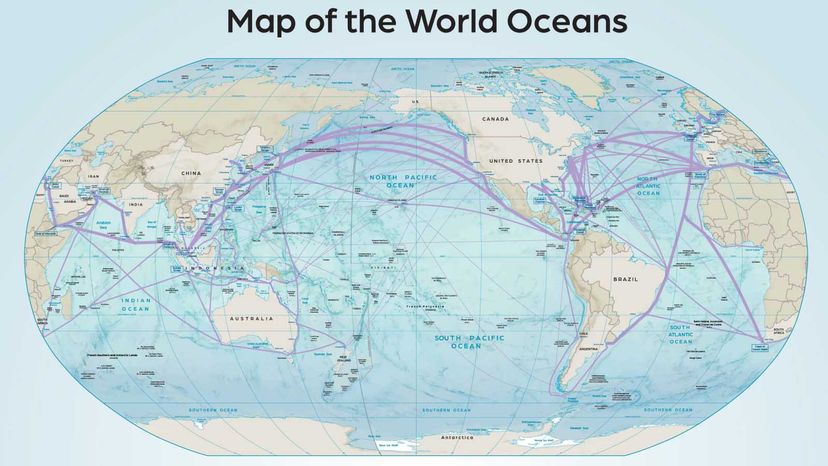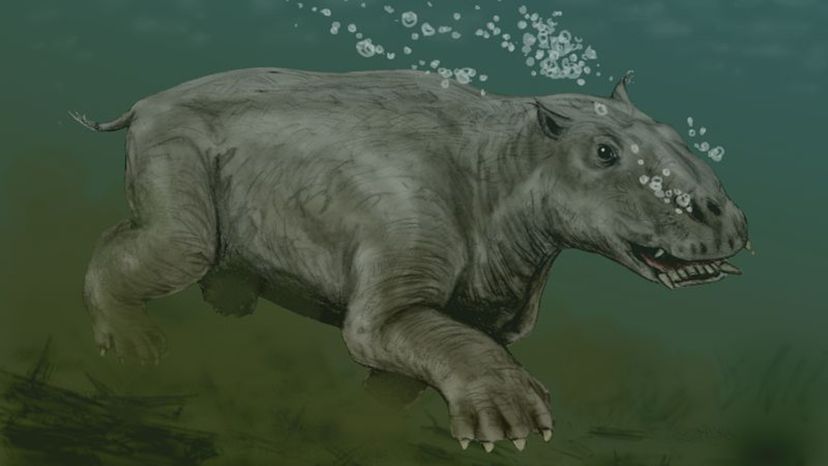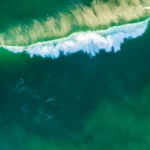All the world’s existing continents have a combined surface area of about 57 million square miles (148 million square kilometers). The Pacific Ocean covers even more ground, ahem, water. At 60 million square miles (155 million square kilometers), it blankets more than 30 percent of Earth’s surface.
Any area of such stupendous size is bound to contain geographical oddities. Not only does the Pacific harbor the world’s deepest trench, but by one metric, it’s also where the tallest mountain on Earth stands. Join us and take the virtual plunge as we explore the wondrous deep that is the Pacific Ocean (without getting our feet wet, thank goodness).
1. It’s One of Five Recognized Oceans
When we talk about the Pacific, we’re discussing a major subset of the “World” or “Global” Ocean. That’s the great, interconnected body of seawater covering 71 percent of Earth’s outer surface. Geographers and scientists divide this into five major sections. Among them, the Pacific Ocean is the largest, followed by the Atlantic, Indian, Southern and Arctic oceans.

2. Magellan Coined the Name
Born in 1480, the Portuguese navigator and explorer Ferdinand Magellan would go on to sail between the southernmost tip of mainland South America and the Tierra Del Fuego archipelago. Now called the “Strait of Magellan,” that expanse is an Atlantic-Pacific connection point. In late 1520, Magellan entered the vast ocean to the west of the Americas. He described the calm waters he found there as “pacific” (i.e., “peaceful”), and the rest is history.
3. It Holds a Lot of Water
Humans can’t survive without shelter, food and fresh water. Unfortunately, the latter is kind of rare in the grand scheme. You see, fresh water makes up just 3 percent of our planet’s total water supply. And most of that is currently trapped in glaciers and ice caps.
The remaining 97 percent of Earth’s water resides within the oceans and their seas. These bodies don’t get equal shares, by the way. The U.S. National Oceanic and Atmospheric Administration (NOAA) reports that the Pacific encompasses 49.4 percent of all the water in our Global Ocean.
With an average depth of 13,000 feet (4,000 meters), the Pacific is the deepest Global Ocean subdivision by far. Furthermore, its volume is over twice the size of the Atlantic’s.
4. Mauna Kea in the Pacific Is Earth’s Tallest Mountain
Mount Everest gets all the attention, but the Himalayan landmark is significantly shorter than Mauna Kea, an inactive Hawaiian volcano. Whereas Everest is 29,029 feet (8,848 meters) tall from its base to its peak, Mauna Kea is 33,500 feet (10,210 meters) in height.
Here’s the catch: A large percentage of Mauna Kea lies below sea level. Meanwhile, Everest stands high and dry atop the world’s biggest continent — so its snowy summit occupies a much higher altitude. Perspective matters.
5. It Was Home to a Weird Group of Herbivores
Where the extinct desmostylians fit into the tree of life is still up for debate. Though they looked a bit like hippos, experts think they were more closely akin to elephants or horses. For millions of years, the semi-aquatic herbivores ate kelp and seagrass in the northern Pacific; their remains have yet to be found anywhere else.
The 13 to 14 known desmostylian species made up a distinct order of mammals. After first appearing 33 million years ago, the beasts died out in the late Miocene Epoch, about 10 million years before the present. So far as we know, they were the only major marine mammal order to vanish entirely.

6. Point Nemo Is As Remote As It Gets
Down in the South Pacific, far below the equator, there’s a place called Point Nemo, also known as the “Oceanic Pole of Inaccessibility.” At this location, you’re literally as far away from dry land as a person can get anywhere on the planet. You’d have to travel more than 1,450 nautical miles (2,685 kilometers) to reach the closest islands.
Point Nemo’s remoteness makes it an attractive target for space agencies. Rockets, satellites, freighters and space stations that’ve outlived their usefulness are deliberately sent crashing into the ocean around this area, where they’re not likely to bother any civilians. Here, 260 spacecrafts or so now lie 2.4 miles (4 kilometers) beneath the water’s surface. The area’s been described as a “spacecraft cemetery.”
7. “Titanic” Director James Cameron Has Been to Its Deepest Point
“I’m the king of the world!” Cameron’s tragic period piece took home a record-setting 11 Oscars at the 1998 Academy Awards. It also nourished his fascination with shipwrecks and deep-sea exploration.
In 2012, Cameron set a different record by completing the first solo trip to the Challenger Deep. Situated 36,070 feet (or 10,944 meters) below sea level, this is the deepest part of the Pacific — or indeed, any ocean. The Challenger Deep lies at the bottom of the Mariana Trench, a trough formed by the ongoing interaction of two tectonic plates.
8. The Pacific Has Two Major Gyres
Earth’s rotation and the layout of its continents drive vast systems of circular ocean currents. Known as “gyres,” they redistribute heat from the sun — along with nutrients that many life-forms depend on.
Two of the world’s five major gyres occur in the Pacific. Above the equator, there’s the North Pacific Gyre that runs clockwise from California to Japan. Beneath this is the South Pacific Gyre, which moves in the opposite direction. They have a shared knack for circulating man-made trash around, giving us extra incentive to try and keep our oceans garbage-free.








